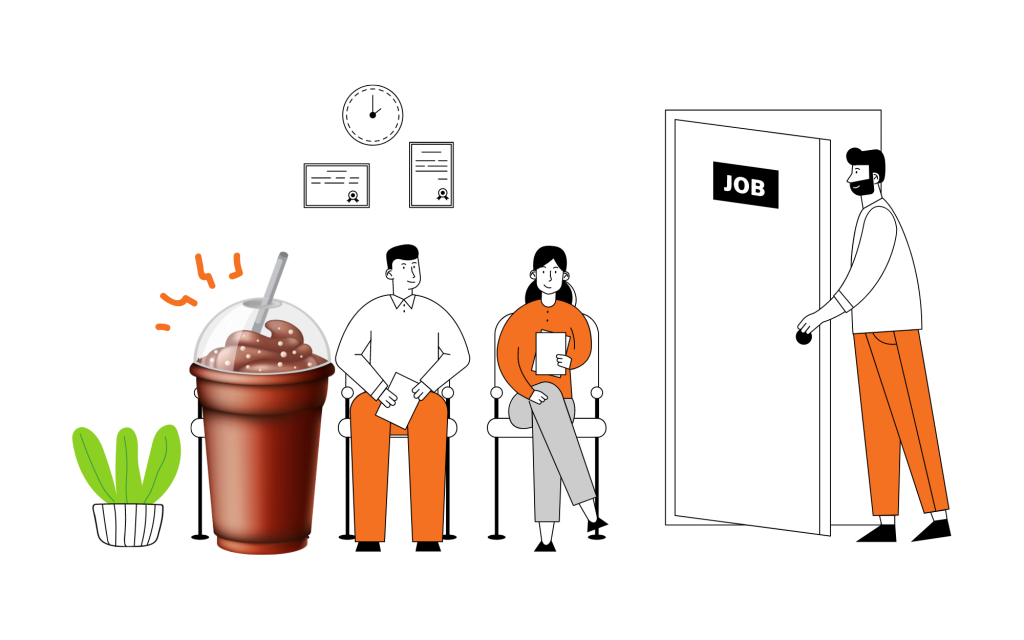
Jobs-to-be-Done is the framework for understanding your customer’s needs. However, it goes further than just understanding, and it provides the foundations for improving existing products and services, launching new products and go-to-market activities.
The purpose of this article is to curate and summarise the best thinking out there on Jobs-to-be-Done in order to explain what it is, why you need to use it and how you can apply it.
In my own adventures, these light bulb moments of recognition for the power of Jobs-to-be-Done have come when I saw it in action, so this article finishes off with some examples.
What is Jobs-to-be-Done (JTBD)?
JTBD was explicitly developed as a tool to help you create products and services that customers (and users) want.
At its core, the Jobs-to-be-Done framework takes the view that people use products or services to get a job done so that they can make progress in their lives. These people can be consumers or employees of an organisation.
People don’t want a car. They want to get to and from work each day. Or maybe, they need it to meet with potential customers and want to impress them. Or maybe, they need to taxi kids around school, activities and family holidays.
The Jobs-to-be-Done framework was invented by Tony Ulwick then popularised by Harvard Business School professor Clayton Christensen.
Sometimes Jobs-to-be-Done can be misinterpreted as just defining the process or task someone is completing, but it’s more than that. Understanding your customer’s Job-to-be-Done also means understanding the emotional aspects and the progress they want to make. Think “jobs-as-progress” rather than “jobs-as-tasks”.
Why Use Jobs-to-be-Done?
The approach of focusing on the Job-to-be-Done differs from the approach many companies take to understanding their customers and delivering products and services.
The conventional and, still mostly prevailing approach, is to understand customers through the lens of demographics, segments, market economics, personal attributes and product attributes.
The implementation of this conventional lens is often about pulling together some data points (usually, attributes of the customer) that are correlated to give an understanding of the customer. An example would be that after your research for a milkshake shop, you see that your customers are mostly male, employed, have a car and use the drive-through in the morning to buy a small milkshake.
In conventional customer understanding land, you would declare “we understand our customer now, we can develop great products and improvements for them”. These related attributes you’ve bought together give you the false impression that you can now reason about your customer’s behaviour with regard to your product. But you don’t have any information on what they want to do, what their behaviour is and why they have certain behaviours.
This is where Jobs-to-be-Done comes in. JTBD is focused on the need someone has and their behaviour. It also covers why someone is doing something. Once you know the need, know why they have it and know why they want to solve it you can only then start to think creatively and effectively about how your organisation can help them.
Jobs-to-be-Done will give you a method for:
- Understanding what need you solve for your customer
- Discovering segments with unique sets of unmet needs
- Sharing your understanding of needs across your organisation
- Developing new products or services with a higher chance of success
- Uncovering more effective go-to-market strategies
- Uncovering business model innovation

JTBD Example: The Job of Milkshakes
The example that brought Jobs-to-be-Done home for me is a case study on how understanding the job of milkshakes helped McDonald’s increase revenue and customer satisfaction for milkshakes.
McDonald’s wanted innovation in their milkshake line. McDonald’s had mounds of data and a very sophisticated profile of their ideal customers. They were running focus groups and would then improve the product based on this feedback, but they weren’t seeing improvements in revenue or profit.
Professor Christensen and his team took a different approach: they wanted to understand what the job is that causes someone to buy a milkshake.
At first, they observed behaviour in stores, which gave them a view of what was happening. They found out that half the milkshakes were sold before 8:30 am, it was the only item the customer bought, and they drove off afterwards.
Then, they asked, “why are you buying a milkshake? What job are you trying to get done?” which people would struggle to answer. Christensen’s team would follow up with “step back a minute, think about the last time you had the same situation and needed to get the job done, what did you hire?”. The responses really started uncovering something interesting:
- “Well, I tried hiring donuts, but boy they are dry and tasteless… I have to put cream cheese on and try to steer the car with my knees.”
- “I hired a banana to do the job last Friday, I finished it quickly.”
- “I hired a snickers bar, but I didn’t quite feel right after that.”
- “When I go to McDonald’s, it is so viscous it takes me about 23 minutes to suck it up that thin little straw. I don’t care what the ingredients are, all I know is when 10 o’clock comes, I’m still full.”
The job the milkshake was doing for customers was that they had a long and boring drive to work where they need something simple to eat that will give them enough sustenance to get them through the morning.
How to Apply Jobs-to-be-Done
Now that you know what Jobs-to-be-Done is and why it’s worth using it, let’s go through an overview of how to apply it.
The simplest starting point is to just start thinking about your customers through their job to be done. You can write this out and debate it amongst your team without any overly complex activities.
If you’ve brainstormed this and want to further enhance your understanding of your customer and ability to create better products and services, then there are some more ways to apply Jobs-to-be-Done:
- Interview your customers to understand what progress they want to make.
- Understand alternatives to your product, not just your direct competition.
- Run JTBD surveys to understand your customer’s behaviour. This might help give you more insights into what they are doing or want to do.
- Apply more complex JTBD frameworks. Tony Ulwick provides a substantial amount of material on his website to help you apply JTBD. You can see a graphic below.
Don’t just stop within product though. You can start to think about distribution and go-to-market through the lens of Jobs-to-be-Done. It can change your messaging, marketing channels and more.
Finally, the hardest part once you have this information is often prioritising the Jobs-to-be-Done. You realise your product solves a variety of problems. Do you stay selling screws, or do you pivot to be an end-to-end materials and service picture hanging company?
Further Reading
Here are a few curated links for further reading if you’re interested:
- Know Your Customers’ “Jobs to Be Done”
- Book: Jobs to be Done: Theory to Practice
- Book: What Customers Want: Using Outcome-Driven Innovation to Create Breakthrough Products and Services
- Podcast: The “Jobs to be Done” Theory of Innovation
- Intercom on Jobs-to-be-Done

Scott Middleton
CEO & Founder
Scott has been involved in the launch and growth of 61+ products and has published over 120 articles and videos that have been viewed over 120,000 times. Terem’s product development and strategy arm, builds and takes clients tech products to market, while the joint venture arm focuses on building tech spinouts in partnership with market leaders.
Twitter: @scottmiddleton
LinkedIn: linkedin.com/in/scottmiddleton